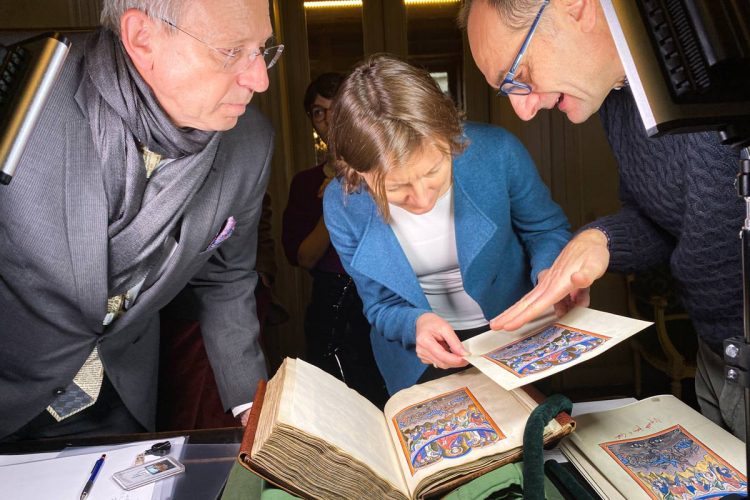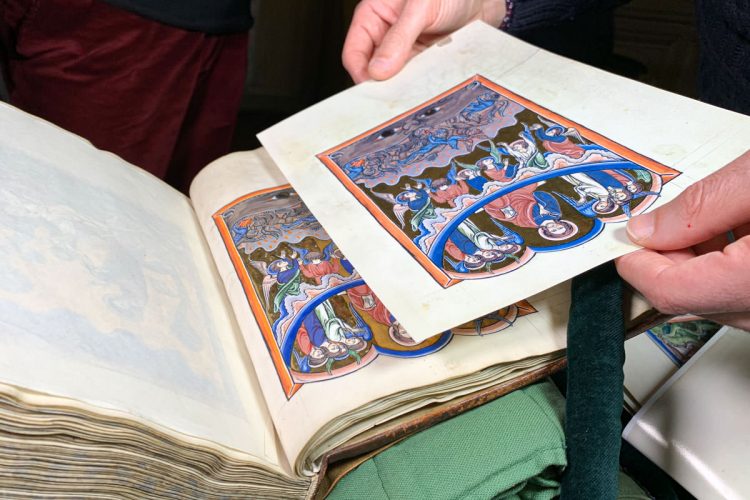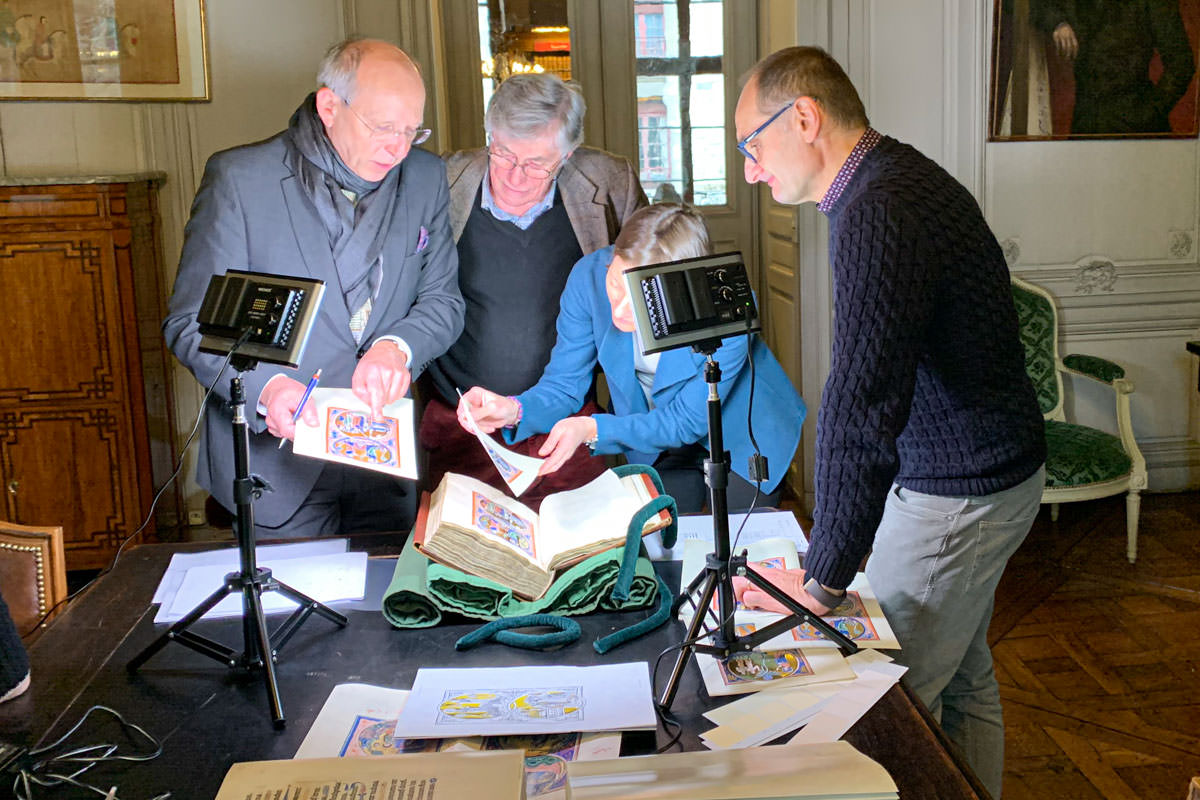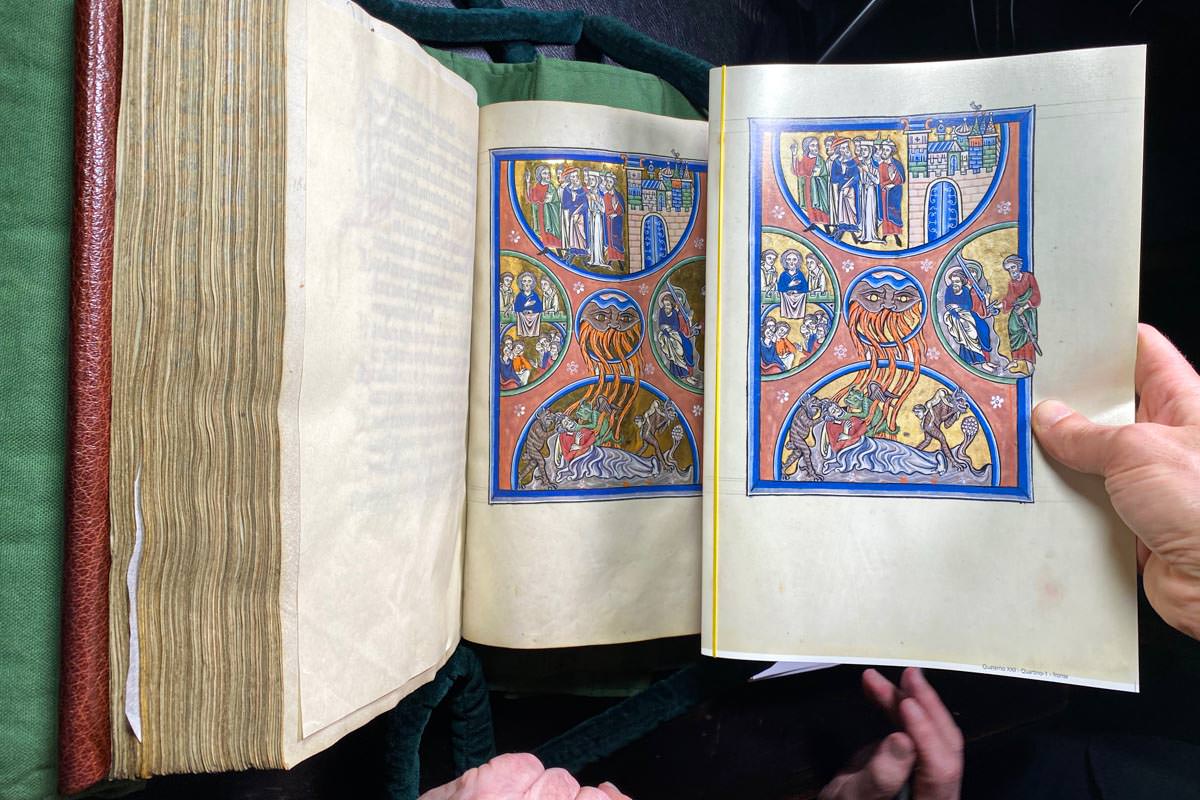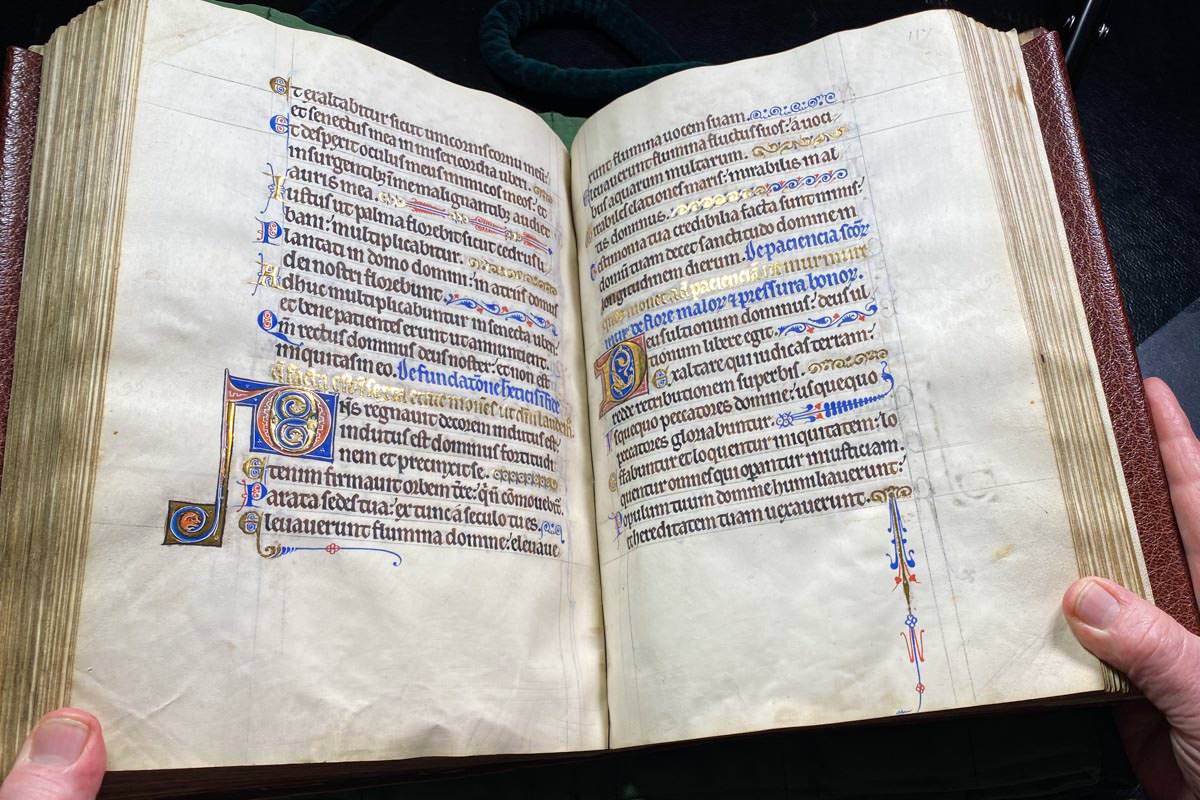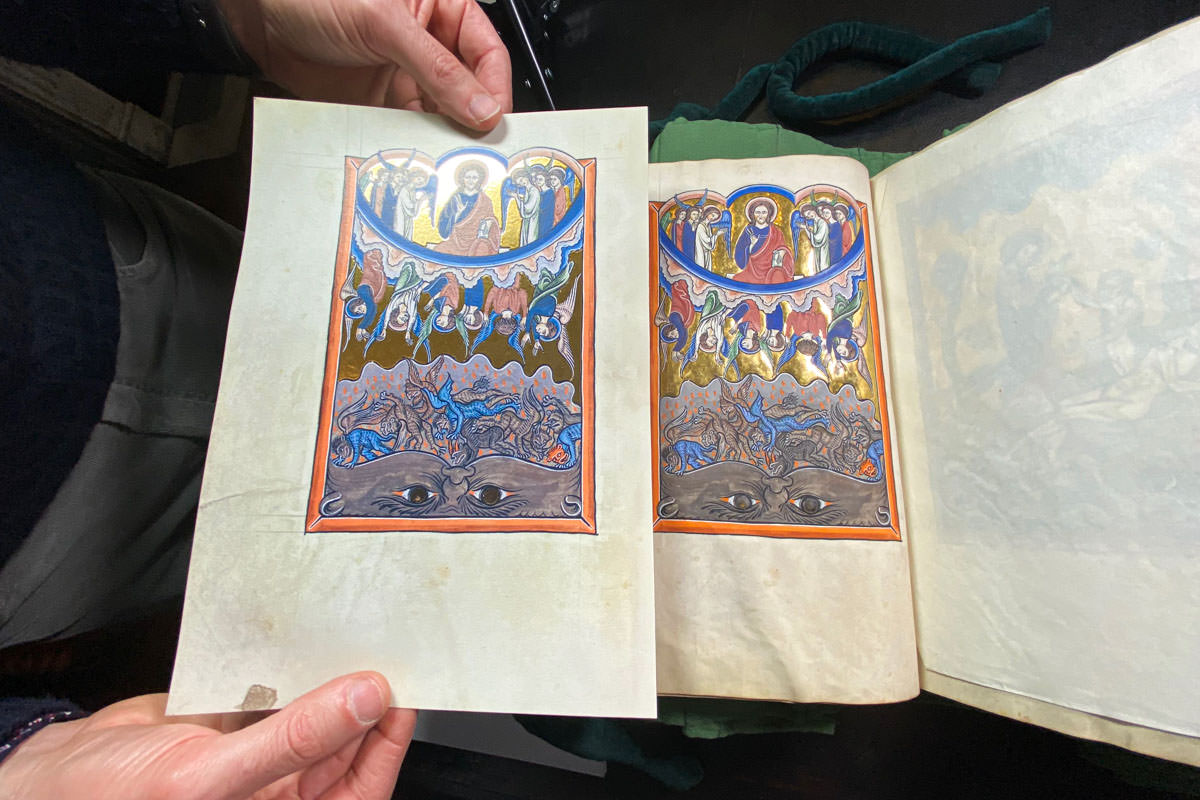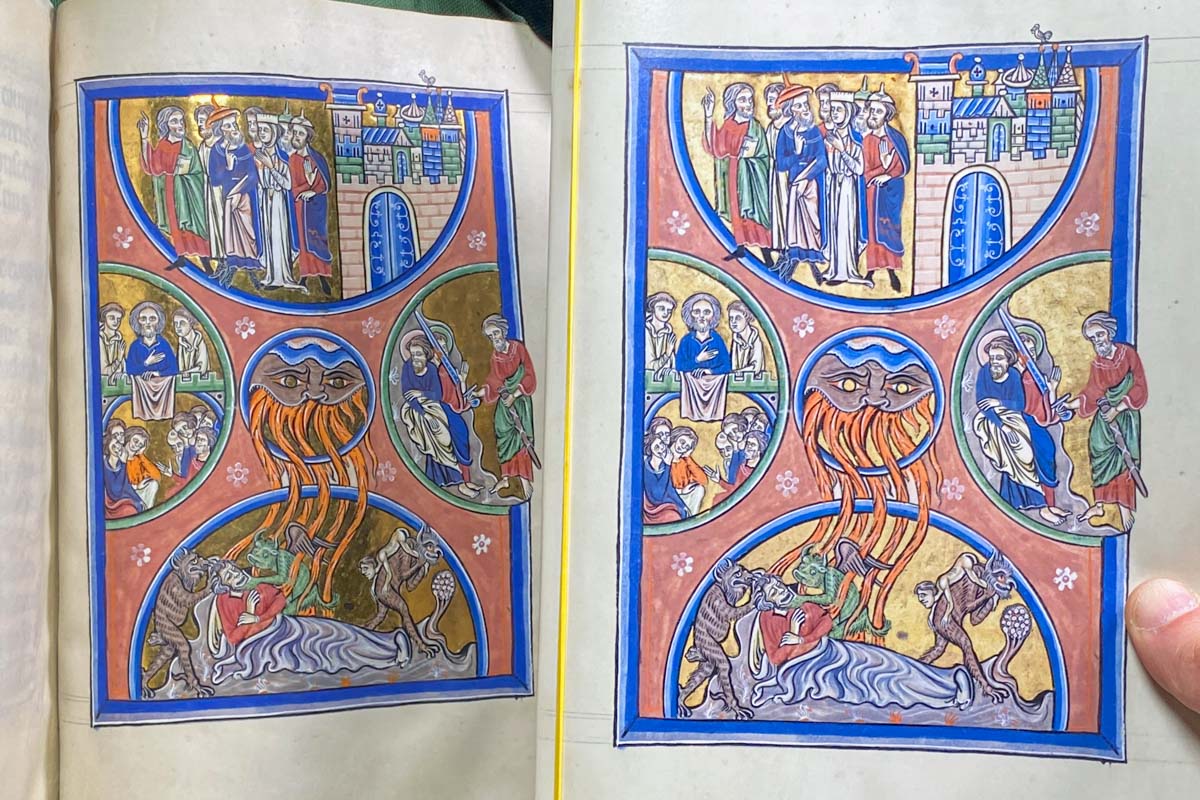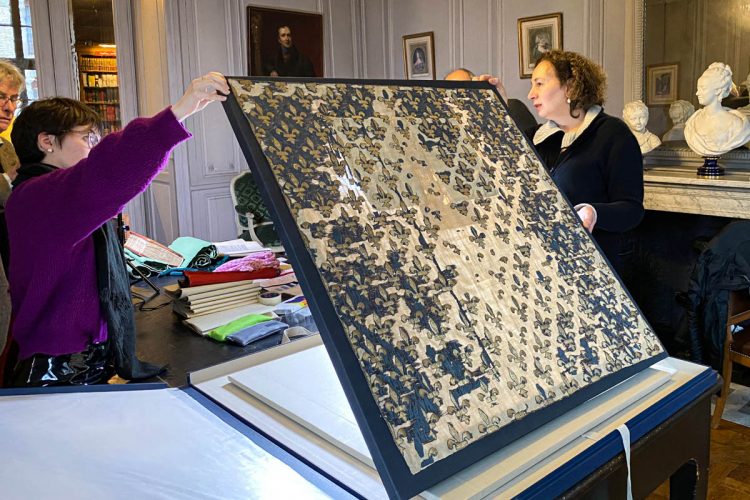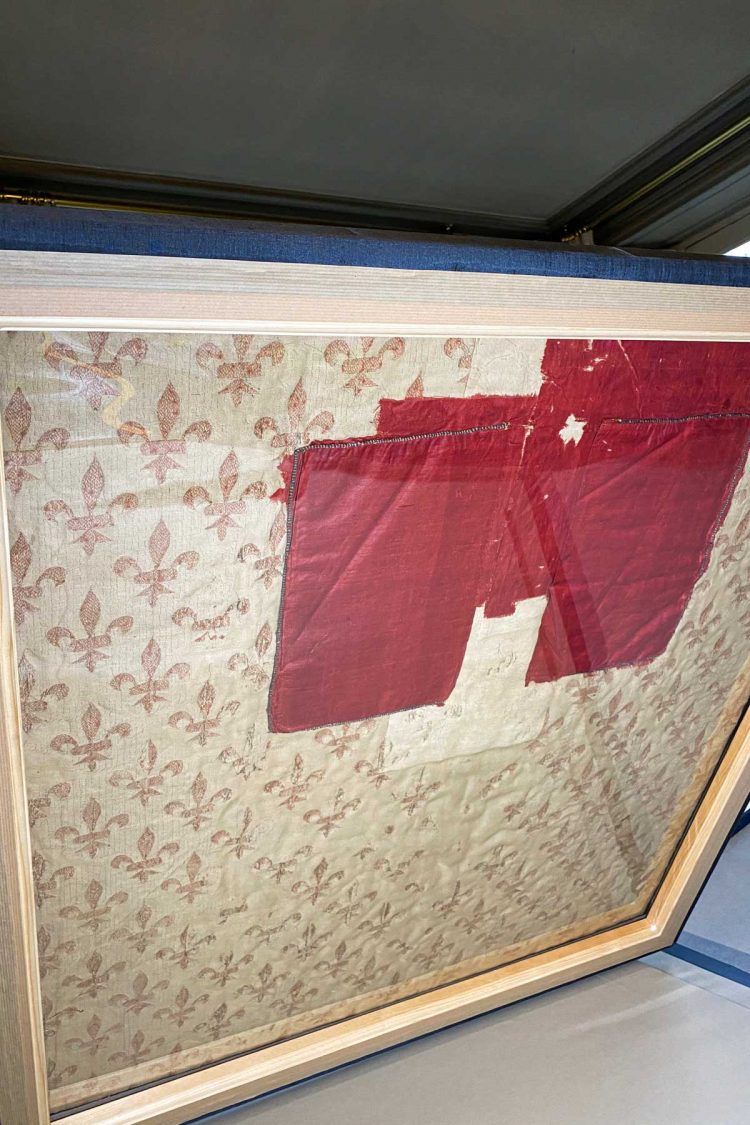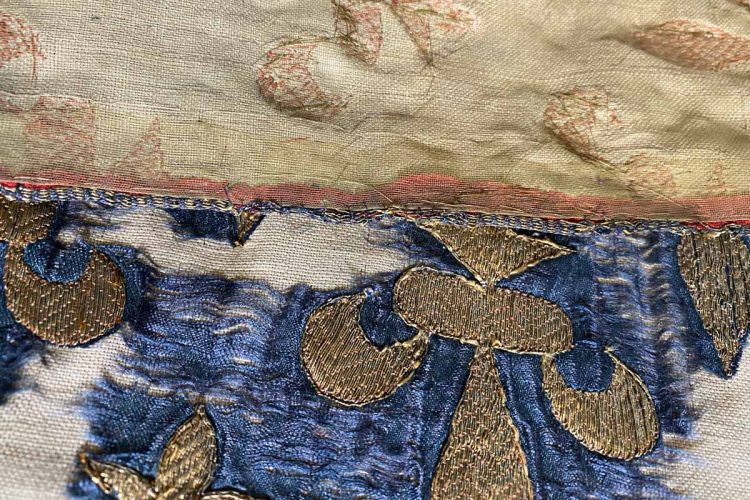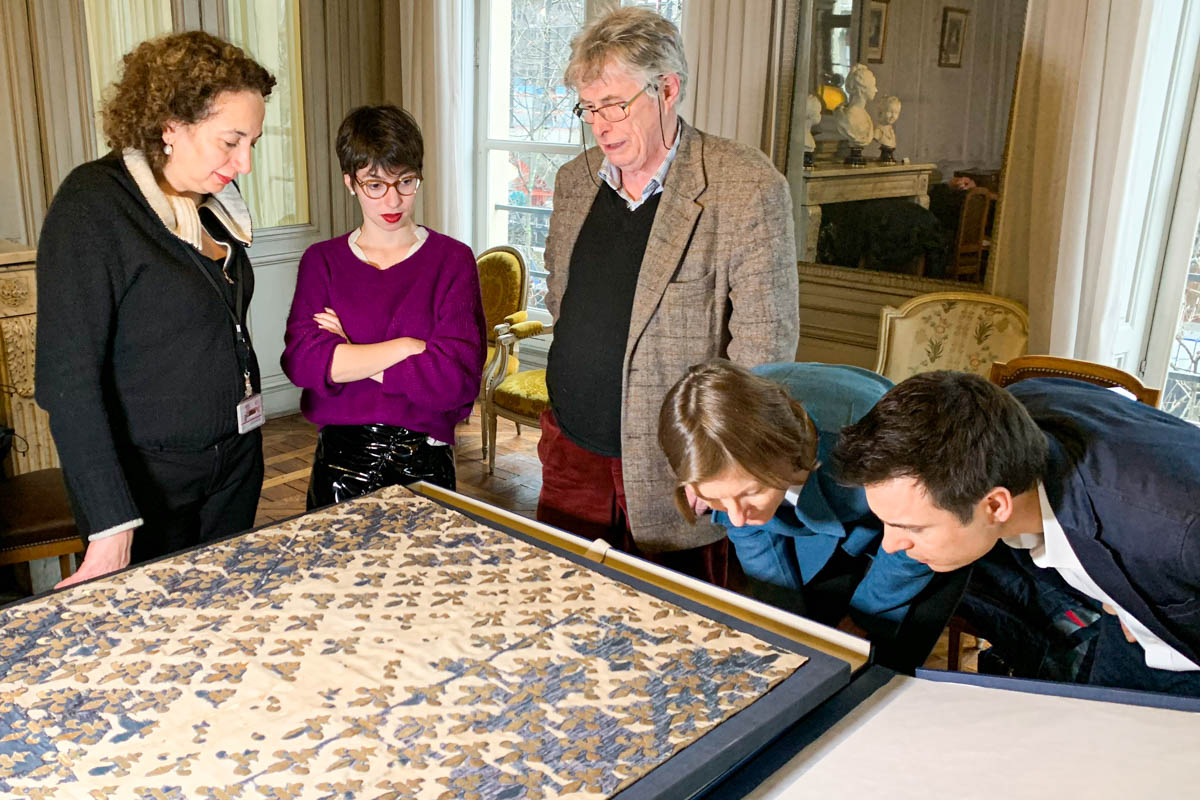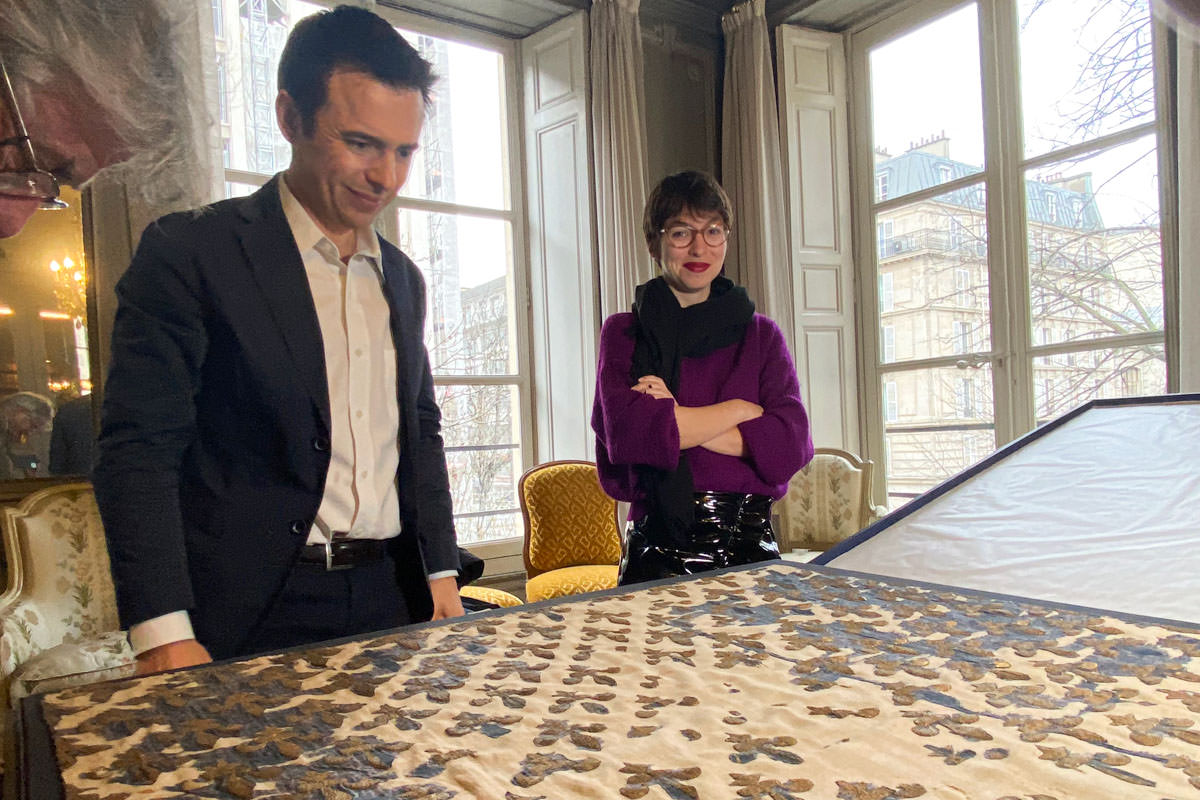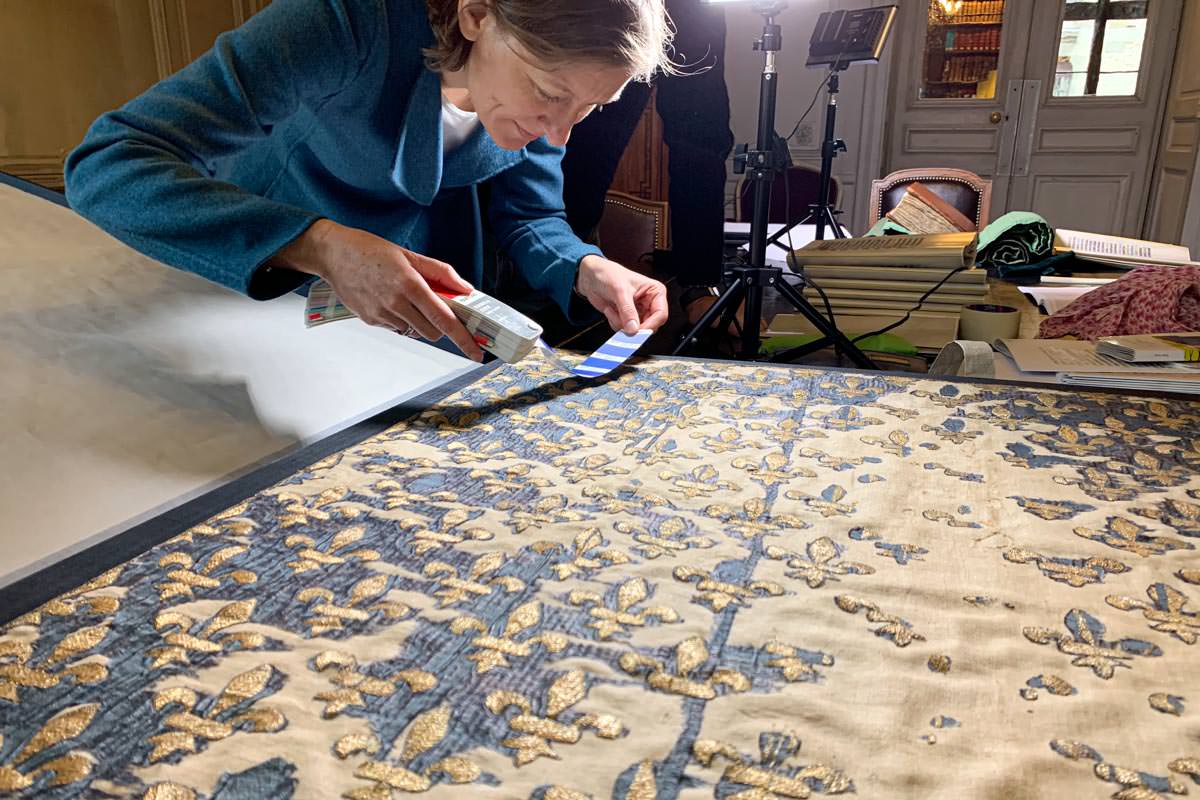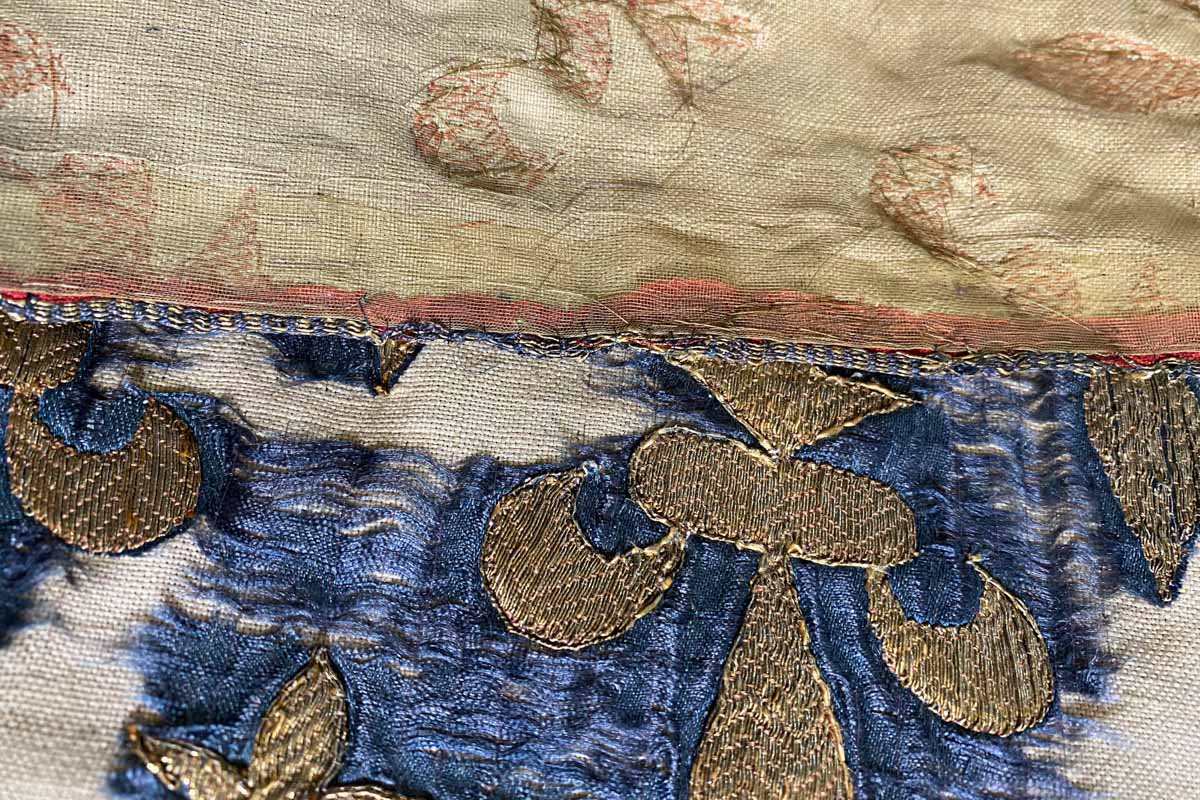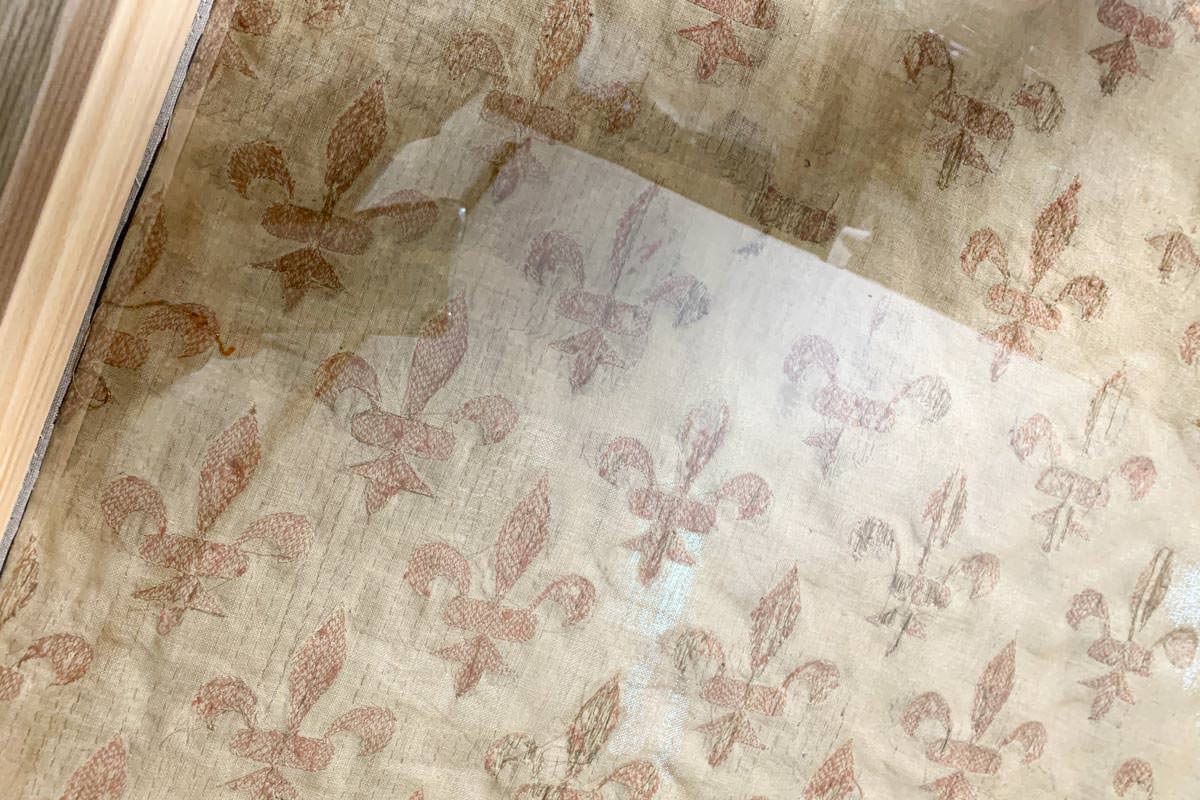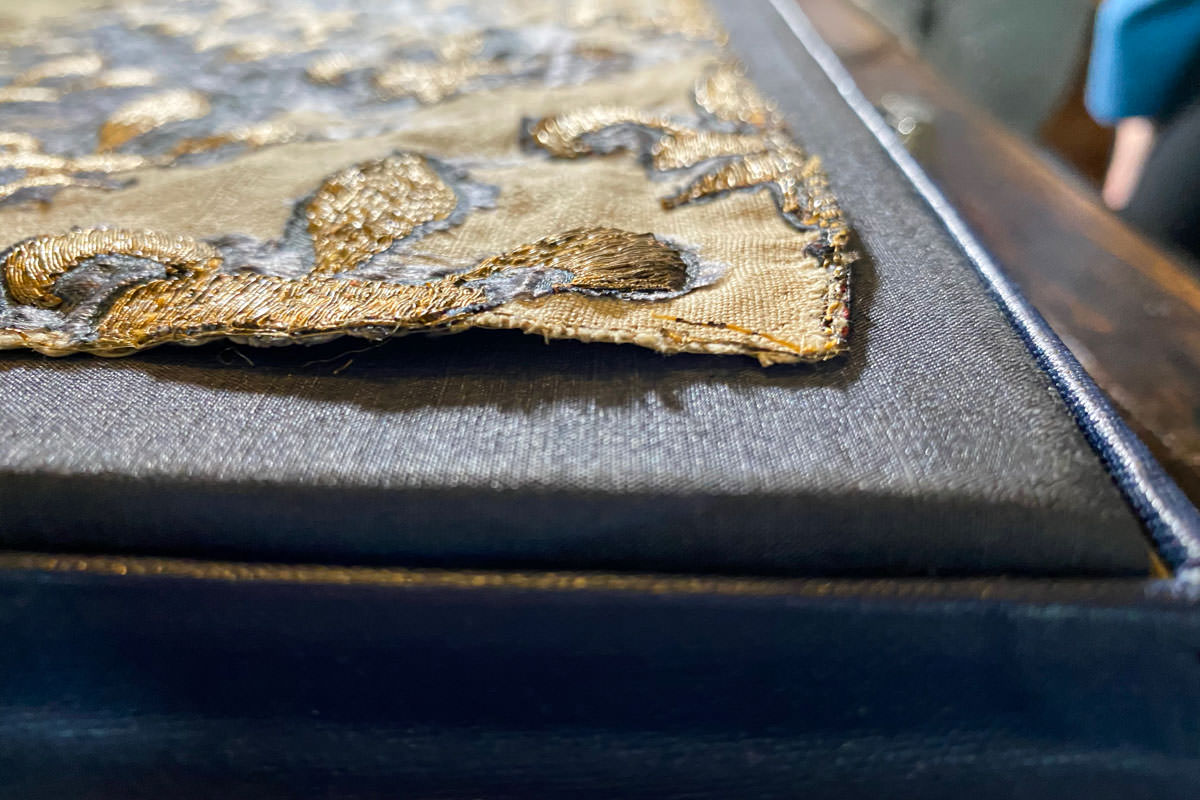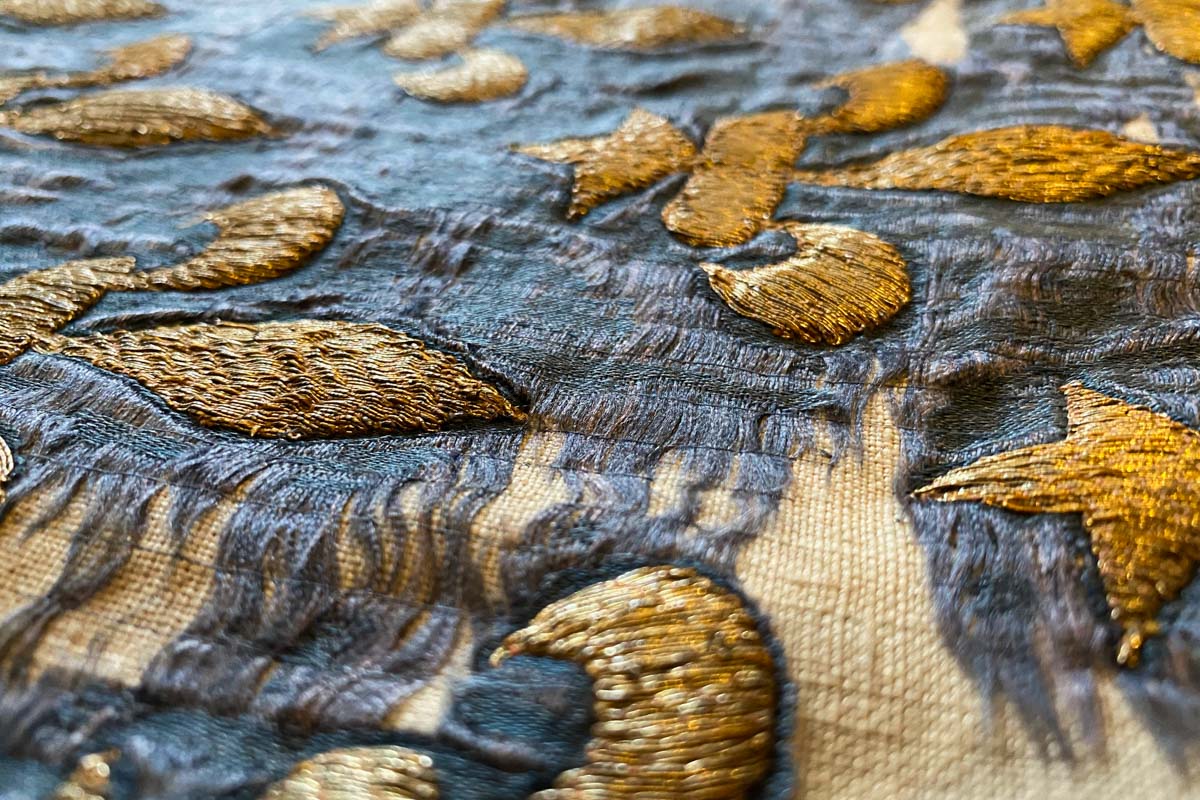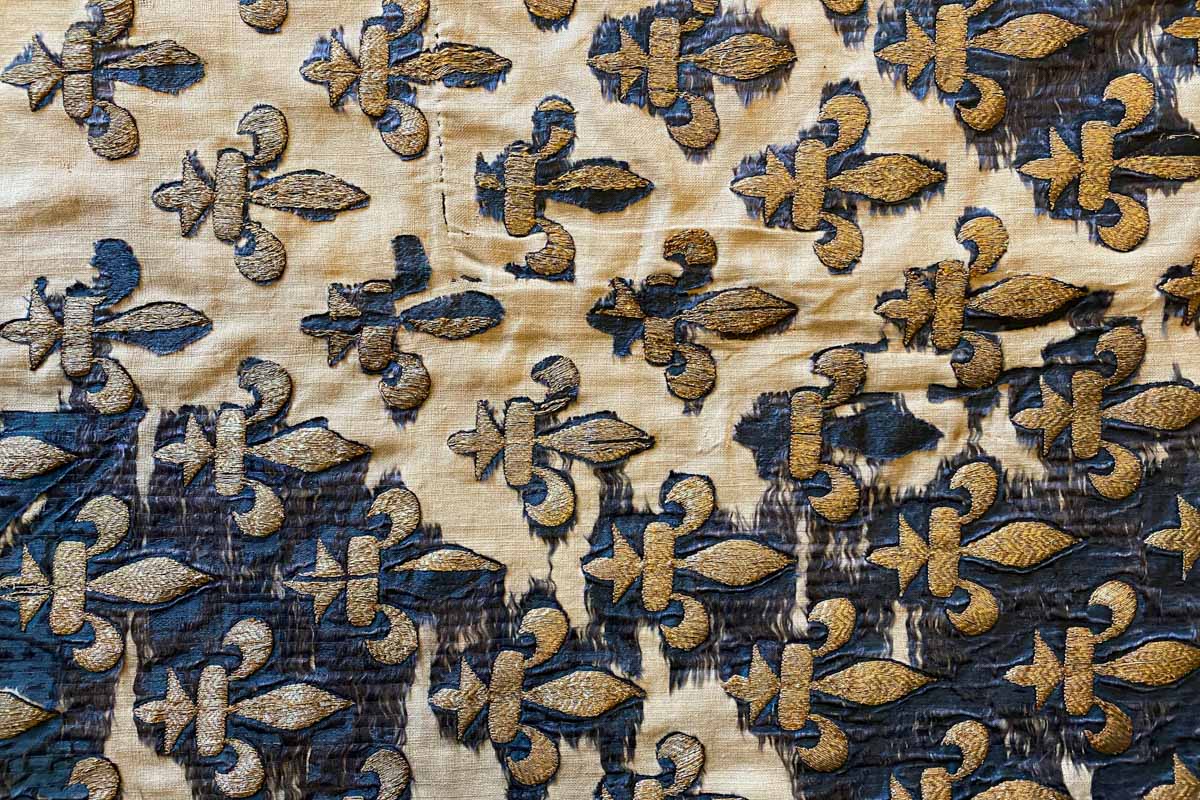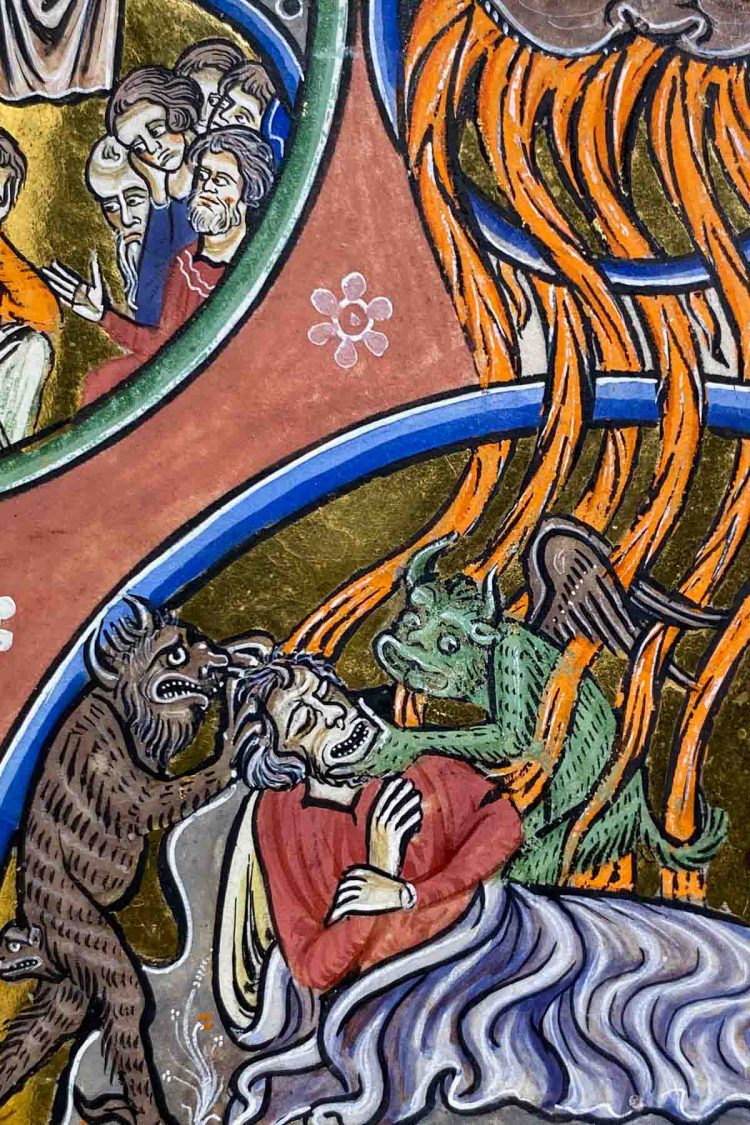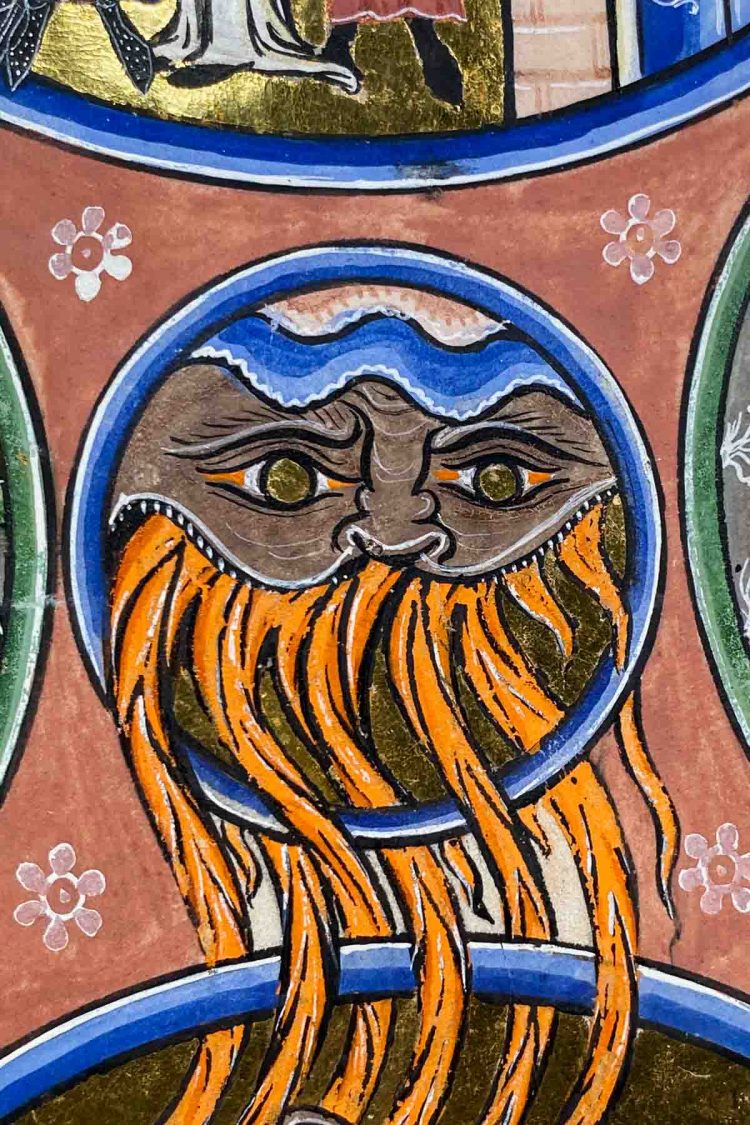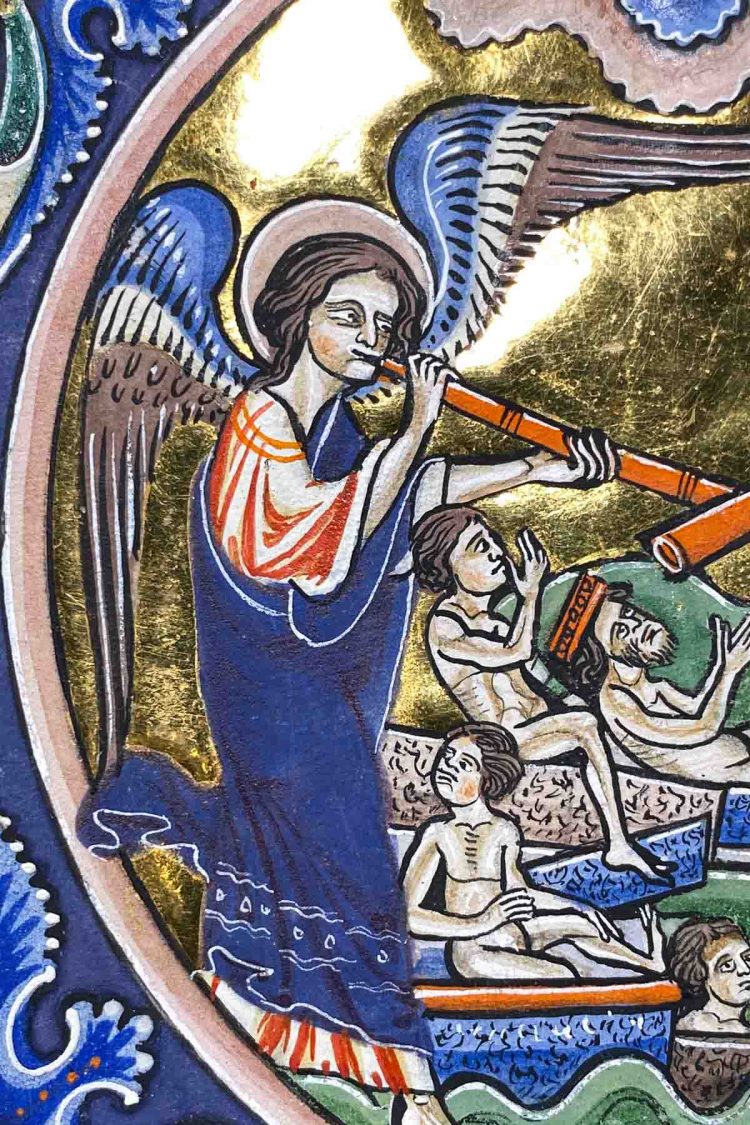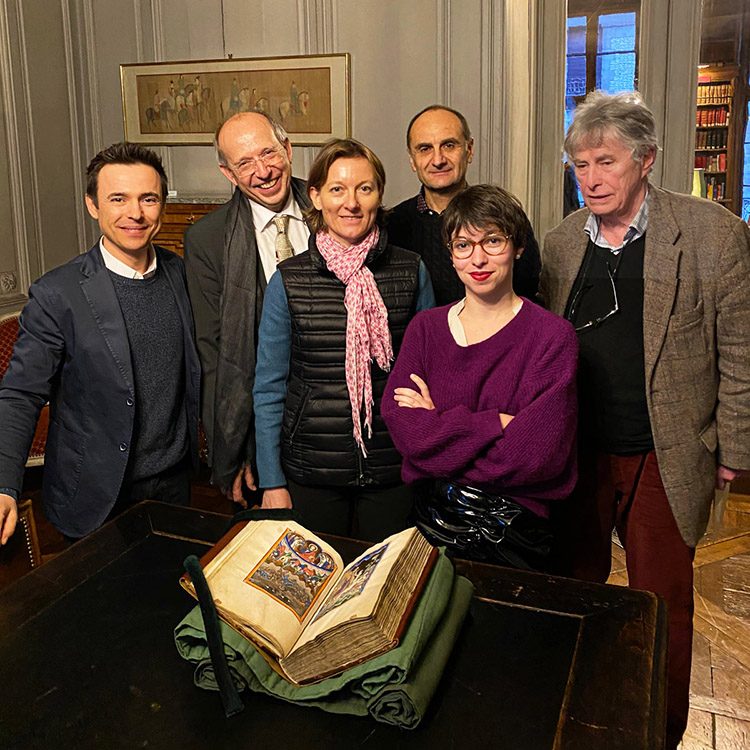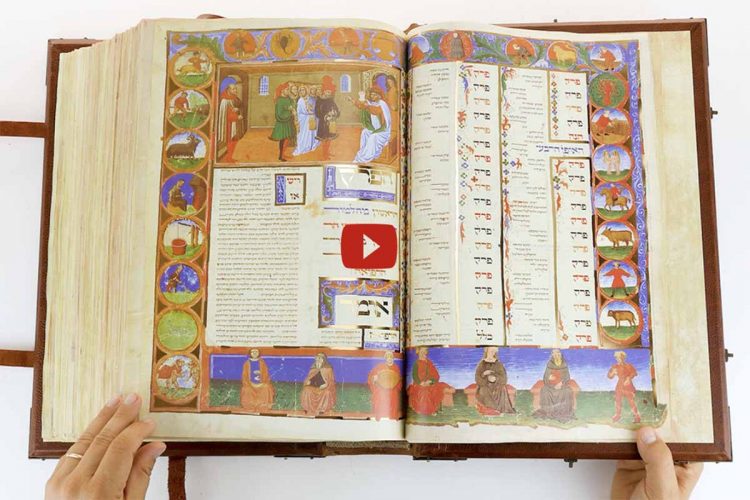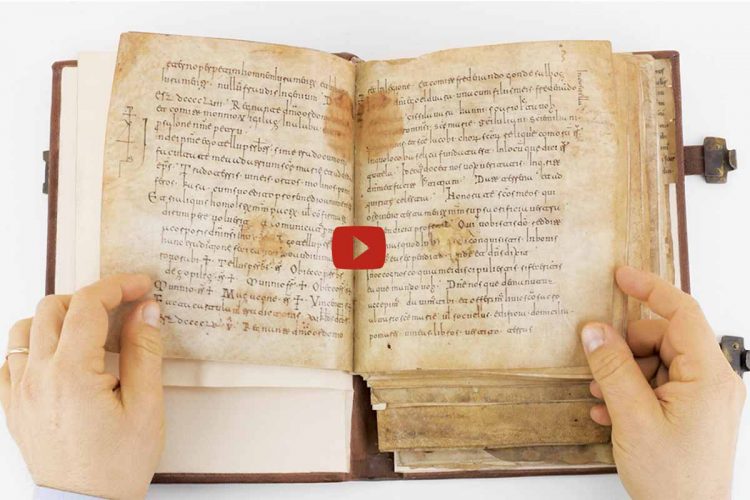The floral silk fabric that once protected the Psalter of Blanche of Castile is among the three surviving medieval embroidered bindings in France. When I saw it for the first time, I couldn’t believe someone could ever produce something so detailed.
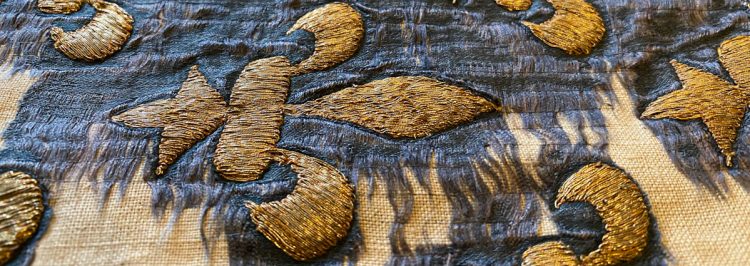
What I enjoy most about my job is visiting libraries and museums where time seems to have stopped, because the historical treasures they hold emanate sacred energy from bygone centuries. My second visit to Paris to study the Psalter of Blanche of Castile was no exception—and I have to say that I felt goosebumps on my body at the thought of creating a facsimile of it.
I am deeply thankful to Charlotte Kramer and library officials Louisa Torres and Khadiga Aglan for this unique opportunity. I am also grateful and honored to have shared this wonderful experience with renowned art historian Eberhard König and experts of the same caliber.
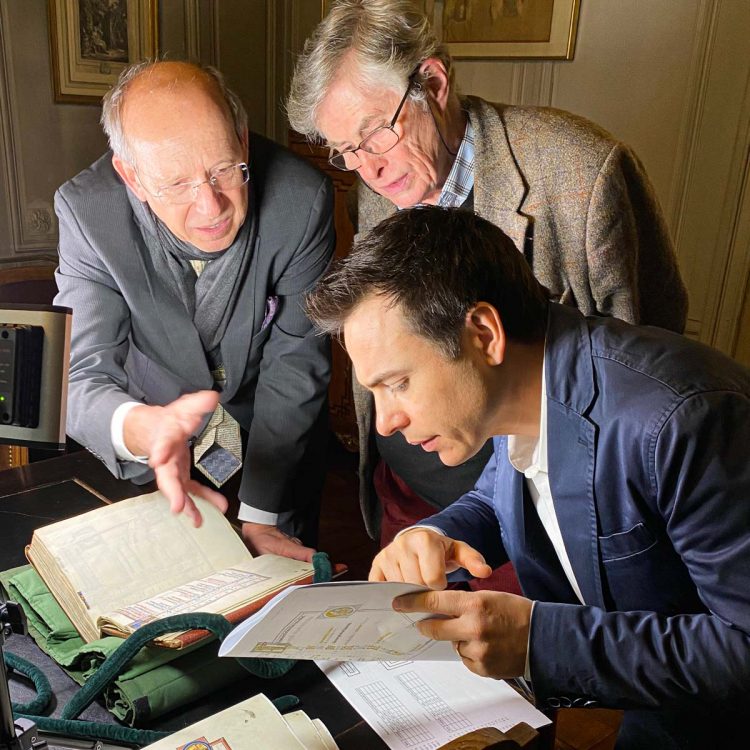
In October 2019, I took part in the first color-proofing session of the Psalter. This time, an even rarer object was awaiting me: the chemise, an embroidered silk binding donated by Charles VI that protected the Psalter for decades — only two other similar bindings have survived in France until today.
So on a misty January Monday, I climbed the steps of the Bibliothèque de l’Arsenal in central Paris for the second time in a few months. Next to me were Charlotte Kramer, head of Müller & Schindler publishing house, expert printmaker Giacomo Cecchetti, and renowned art historian Eberhard König. This time, art historian and author Dieter Röschel also joined us.
We had established our roles — Charlotte and Giacomo would be color proofing the miniatures, Eberhard and Dieter were in charge of analyzing the manuscript’s structure and the arrangement of its flesh and hair sides, and my task was to recognize the nature of gold on the folios — sometimes it is hard to tell from digital images whether shell gold or gold leaf was used for the miniatures.
The whole morning, however, all we could think about was the chemise binding. What would it look like from a short distance? Would we be able to reproduce its every detail?
To this day, only three medieval embroidered bindings have survived in France. The chemise of the Psalter of Blanche of Castile is one of them.
Meanwhile, the results of our analysis proved surprising in many ways: we had found the right colors to match exactly the hues of the manuscript, and the two art historians were able to carry out the first-ever analysis of the manuscript’s structure — which was an arduous task because the folios are so tightly bound together that it is impossible even to see the thread. We also found that the codex’s main miniatures were placed mostly on the hair side of the folios, something unusual for a medieval manuscript.
Waiting for the chemise
As the clock struck four, two staff members entered the room carrying a huge, dark blue box. We all came closer while the cover was slowly removed to reveal a large blue silk fabric embroidered with one hundred golden fleurs-de-lis. No, we were not expecting such beauty.
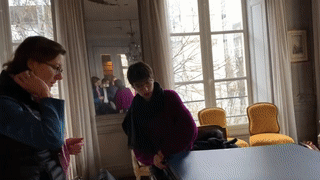
The closer we moved to the 14th-century fabric, the more amazed we were to see what Charles VI had commissioned to shield the sacred Psalter from the dangers of time. Not even a microscope would be enough to inspect every detail of this seven-hundred-year-old fabric, I thought as I admired the gold threads of the lilies, made of yellow silk threads, each one individually covered in a golden metallic alloy.
The almost imperceptible, reddish-orange particles nestled in the flower pattern made us turn the fabric to find the same motif, but in red, on the back side of the cloth. Several centuries ago, the back side was all covered in red fabric, which has sadly worn off with time.
The flower motifs are held in place by a fine red silk thread sewn in chevrons, which creates a relief effect and gives the gold a warm tone.
That moment, I realized how 14th-century Parisians “dressed up” their cherished prayer books to embellish them and make their spirit last longer in time. The book was held open, the front and back covers were placed in the red-fabric pockets, and the codex was closed again — much in the same way I help my son protect his schoolbooks with a plastic cover, or as you would put on a shirt (chemise, in French).
At first, we couldn’t seem to find the right shade of blue to produce a replica of the chemise: all seemed either too blue or too violet. Then Khadiga Aglan, one of the library officials, stepped in to suggest we use the background color of one of the miniatures — and we realized her idea was spot-on because the hue of some miniatures matches exactly the color of the chemise.
We listened in awe to her colleague Louisa Torres tell the story of the chemise: the pocket’s position on the back, in the center of the chemise, tends to confirm the idea that at the end of the 14th century the psalter of Saint Louis was no longer open and read, but kept closed and showcased.
The chemise was renovated about two decades ago because centuries of folding and unfolding had ruined the silk fabric. It took almost an entire year of work for a specialized restorer to repair the original silk cloth.
The chemise of the Psalter of Blanche of Castile is an extremely rare object. Medieval paintings often show books surrounded by a precious fabric, which proves the popularity of this practice, but only three embroidered bindings have survived to this day in France, and all have recently been exhibited for the first time at the Cluny Museum in Paris.
Our day at the Bibliothèque de l’Arsenal couldn’t have been more meaningful and engaging. And, once more, nothing would have been possible without the invaluable help of library officials Louisa Torres and Khadiga Aglan.
Merçi beaucoup, à bientôt!
NEW WEEKLY VIDEOS
Find our more about the Avicenna’s Canon of Medicine (Bologna, Biblioteca Universitaria di Bologna, MS 2197) on our website!
Find our more about the Cartularies of Valpuesta (Madrid, Archivo Histórico Nacional de España, Códices 1166B y 1167B) on our website!


